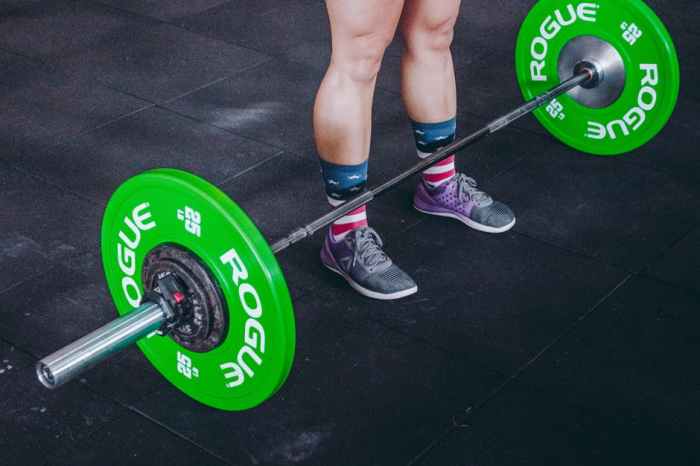Does walking build muscle? The answer isn’t a simple yes or no. Walking, a low-impact exercise accessible to most, can indeed contribute to muscle development, but the extent depends on several factors. This exploration delves into the relationship between walking and muscle building, examining various walking styles and intensities, and comparing them to other forms of exercise.
We’ll uncover the specific muscles engaged, the methods to maximize muscle growth, and even consider the nutritional aspects of this popular activity.
Different walking paces target different muscle groups. Slow or moderate walks primarily work the legs, core, and glutes. A faster pace engages the upper body more, including arms and shoulders. Interval training elevates the intensity, challenging these same muscle groups even further. Understanding these variations is key to tailoring your walk for optimal results.
Introduction to Walking and Muscle Building

Walking, often perceived as a low-impact activity, can be a surprisingly effective tool for building and strengthening muscles. It engages various muscle groups, contributing to overall physical fitness and well-being. While not a replacement for dedicated weight training, consistent walking can certainly contribute to muscle development, particularly in the lower body.This approach emphasizes the role of different walking styles and intensities in maximizing muscle engagement.
It explores how varying paces and techniques affect the specific muscles worked and the overall intensity of the workout. By understanding these dynamics, individuals can tailor their walking routines to optimize their muscle-building goals.
Types of Muscles Engaged During Walking
Walking is a multifaceted movement involving numerous muscles. The primary muscles engaged during a brisk walk are concentrated in the legs, core, and glutes. The leg muscles, including quadriceps, hamstrings, calves, and gastrocnemius, are continuously working to propel the body forward. The core muscles (abdominals and lower back) stabilize the body, preventing unwanted movements and maintaining posture.
The glutes, crucial for hip extension, also play a significant role in maintaining balance and power during the stride.
Differences in Walking Styles and Muscle Engagement
The effectiveness of walking for muscle building significantly depends on the style and intensity of the walk. Variations in pace and technique directly impact which muscles are engaged and the level of exertion. A leisurely stroll will primarily work the lower body muscles, while a faster pace engages more muscles in the upper body as well. Interval training, alternating between high-intensity bursts and recovery periods, maximizes calorie burn and muscle engagement.
Walking Pace and Muscle Group Engagement
The intensity of the walk directly influences the muscle groups that are recruited and the level of effort required. The table below illustrates the relationship between walking pace and muscle engagement.
| Walking Pace | Primary Muscle Groups Engaged | Intensity Level |
|---|---|---|
| Slow/Moderate | Legs, Core, Glutes | Low to Moderate |
| Fast-Paced | Legs, Core, Glutes, Upper Body (arms/shoulders) | Moderate to High |
| Interval Training | Legs, Core, Glutes | High |
For example, a brisk walk, characterized by a faster pace, not only works the lower body muscles more intensely but also engages the muscles in the arms and shoulders, leading to a more comprehensive workout. The inclusion of intervals further elevates the intensity, challenging the muscles to work harder and recover more quickly.
Walking for Muscle Growth
Walking, often perceived as a low-impact exercise, can indeed contribute to muscle development. It’s not just about cardiovascular health; targeted walking methods can stimulate muscle growth, especially in the legs, glutes, and core. This process requires understanding specific techniques, proper intensity, and a structured approach. This guide delves into effective walking methods for muscle building.Proper walking technique is crucial for maximizing muscle engagement and preventing injuries.
It’s about more than just putting one foot in front of the other. This article will explore various walking techniques, the importance of posture and form, and the role of intensity and duration in your muscle-building journey.
Walking Methods for Muscle Growth
Different walking methods can target various muscle groups. Power walking, incorporating brisk strides and controlled arm movements, is highly effective for building leg and core strength. Hill walking, utilizing inclined terrain, increases the resistance and strengthens muscles in the legs and glutes more intensely. Interval walking, alternating between high-intensity bursts and recovery periods, can also stimulate muscle growth.
While walking might not bulk you up like lifting weights, it definitely builds endurance and strengthens muscles. Thinking about overall health, chest x-rays play a crucial role in asthma screening and diagnosis, as they help identify potential underlying issues. For example, chest x rays asthma screening and diagnosis can reveal if there’s any inflammation or structural problems that could be contributing to breathing difficulties.
Ultimately, walking is a great low-impact way to improve your overall fitness and well-being.
Importance of Posture and Form, Does walking build muscle
Maintaining proper posture and form while walking is essential for maximizing muscle engagement and minimizing the risk of injury. A tall posture, with a straight back and shoulders relaxed, engages core muscles and prevents strain on the lower back. A natural, rhythmic arm swing, rather than stiff or excessive arm movements, contributes to balance and overall efficiency. Landing mid-foot, rather than heel-first, distributes impact more evenly and minimizes stress on joints.
Intensity and Duration for Muscle Development
The intensity and duration of your walks directly influence muscle growth. For noticeable muscle development, gradually increase the intensity of your walks, measured by your heart rate and perceived exertion. A brisk pace that elevates your heart rate into the moderate-intensity zone, is optimal. Duration is equally important. Aim for at least 30-45 minutes of continuous walking, or split your workout into multiple shorter sessions.
Structured Walking Plan for Muscle Growth (8 Weeks)
This structured plan provides a guideline for building muscle through walking over eight weeks. Adjust the intensity and duration based on your fitness level.
| Week | Day | Type of Walk | Duration (minutes) | Intensity | Additional Exercises |
|---|---|---|---|---|---|
| 1-2 | Mon, Wed, Fri | Power Walking | 30 | Moderate | Bodyweight squats (10 reps) |
| 1-2 | Tues, Thurs, Sat | Hill Walking | 30-40 | Moderate-High | Glute bridges (15 reps) |
| 3-4 | All Days | Interval Walking | 40-45 | High-Moderate | Plank (30 seconds hold) |
| 5-6 | Mon, Wed, Fri | Power Walking | 40 | High | Lunges (10 reps per leg) |
| 5-6 | Tues, Thurs, Sat | Hill Walking | 45-50 | High | Calf raises (15 reps) |
| 7-8 | All Days | Interval Walking | 45-60 | High-Moderate | Core rotations (10 reps per side) |
Common Mistakes to Avoid
- Insufficient warm-up: A proper warm-up prepares your muscles for the workout, preventing injuries. A 5-10 minute light cardio warm-up and dynamic stretches are essential.
- Ignoring proper form: Maintaining correct posture and form is crucial for optimal muscle engagement and injury prevention. Focus on your form throughout the walk.
- Lack of gradual progression: Rushing into intense workouts without gradually increasing intensity and duration can lead to injuries and plateaus.
- Inadequate hydration: Staying adequately hydrated is crucial for performance and muscle recovery. Drink water before, during, and after your walks.
- Neglecting rest and recovery: Allowing your muscles adequate rest and recovery time is vital for muscle growth. Incorporate rest days into your schedule.
Specific Muscle Groups Targeted by Walking
Walking, a seemingly simple activity, engages a surprising number of muscle groups throughout the body. Beyond just getting you from point A to point B, consistent walking can contribute significantly to muscle strength and endurance. Understanding which muscles are primarily involved and how different walking styles affect their activation is key to maximizing the benefits of this low-impact exercise.
Key Muscle Groups Engaged
Walking relies heavily on several major muscle groups for propulsion and stability. These groups work synergistically, with some bearing more weight than others depending on the terrain and intensity. The primary muscles involved in walking include the quadriceps, hamstrings, glutes, and calves. Proper activation of these groups leads to improved posture, balance, and overall fitness.
Quadriceps
The quadriceps femoris, a group of four muscles in the front of the thigh, are crucial for extending the knee joint during the walking cycle. Walking on level ground typically results in moderate activation of the quadriceps, contributing to maintaining balance and propelling the body forward. Increased intensity, like hill walking, will necessitate a higher degree of quadriceps engagement.
Hamstrings
Located on the back of the thigh, the hamstrings play a vital role in flexing the knee joint and extending the hip joint. Their activation during walking is substantial, especially when ascending inclines. Hill walking, or any walking that requires a greater degree of pushing against gravity, will elicit a high degree of hamstring activation. This sustained activation strengthens these muscles, improving leg power and overall lower body strength.
While walking might not pack on the same muscle mass as lifting weights, it definitely contributes to overall strength and fitness. However, when considering bone health, especially in cases of cancer with bone metastases, the role of bone modifying drugs for cancer with bone metastases becomes crucial. These drugs help maintain bone density and strength, which is vital for preventing fractures and maintaining mobility, a key factor for continuing a walking routine.
So, even though walking isn’t a primary muscle-building activity, it remains a fantastic way to stay active and healthy, especially when combined with appropriate medical interventions like those found in bone modifying drugs for cancer with bone metastases. bone modifying drugs for cancer with bone metastases Ultimately, a healthy lifestyle, including walking, is often the best approach.
Glutes
The gluteus maximus, medius, and minimus, collectively known as the glutes, are critical for hip extension and maintaining stability during walking. Stair climbing, with its pronounced vertical component, activates the glutes significantly more than level ground walking. Walking on uneven terrain or with increased speed will also increase glute activation. Strong glutes contribute to better posture, stability, and power in movement.
Calves
The gastrocnemius and soleus muscles, located in the calf, are responsible for plantar flexion of the foot. These muscles are continuously engaged throughout the walking cycle, contributing to pushing off from the ground and maintaining balance. Walking uphill or on uneven surfaces requires a higher degree of calf activation for proper propulsion.
Impact of Terrain and Inclines
The type of terrain and incline significantly affects muscle activation during walking. Walking on level ground activates muscle groups more evenly. As the incline increases, the hamstrings and glutes are more heavily engaged, while the quadriceps are also significantly involved in maintaining balance and propulsion. Declines can require more calf muscle activation to maintain control.
Muscle Activation Table
| Muscle Group | Walking Type | Muscle Activation |
|---|---|---|
| Quadriceps | Level ground walking | Moderate |
| Hamstrings | Hill walking | High |
| Glutes | Stair climbing | High |
| Calves | Uneven terrain walking | High |
Walking vs. Other Forms of Exercise for Muscle Building
Walking, while a fantastic cardiovascular exercise, can contribute to muscle building, but its effectiveness differs from other forms of training. Understanding these nuances allows for a more informed approach to fitness goals. This section compares walking’s muscle-building potential with other popular exercises, highlighting the advantages and disadvantages of each.Walking, unlike weight training, primarily builds endurance and doesn’t always target specific muscle groups with the same intensity.
However, consistent walking does promote strength in the lower body and core muscles.
Comparison of Walking with Weight Training
Weight training, with its emphasis on resistance, is generally more effective for building significant muscle mass. This is because it directly forces muscles to adapt and hypertrophy (increase in size) through the stress of lifting weights. Walking, on the other hand, relies on body weight as resistance, which is less intense for muscle growth compared to lifting weights.Walking’s benefit lies in its accessibility and low impact.
It’s easier to integrate into daily routines and can be a great option for beginners or those with joint issues. Weight training, while potentially more effective for muscle building, requires more time commitment and proper form to avoid injuries.
Pros and Cons of Walking Compared to Weight Training
- Walking: Pros include low impact, easy to integrate into daily routines, and accessible to most people. Cons are that it doesn’t build muscle as effectively as weight training, and the gains in muscle strength are often less pronounced.
- Weight Training: Pros include higher muscle growth potential, greater strength gains, and increased metabolism. Cons are higher risk of injury if not performed correctly, and potentially more time-consuming.
Advantages and Disadvantages of Walking Tools
Using tools like weighted vests or poles can enhance the effectiveness of walking for muscle building.
- Weighted Vests: Weighted vests increase resistance, thereby challenging muscles more effectively. Advantages include enhanced calorie burning and increased muscle activation. Disadvantages include potential strain on joints if the weight is too high or the form is incorrect.
- Walking Poles: Walking poles can engage more muscle groups, especially in the upper body, improving overall strength and stability. Advantages include improved posture, reduced strain on joints, and enhanced calorie expenditure. Disadvantages include the learning curve of proper technique and the additional cost compared to regular walking.
Complementary Exercise Modalities
Walking can be effectively combined with other exercises for enhanced muscle development.
- Bodyweight exercises: Incorporating bodyweight exercises like squats, lunges, and push-ups can complement walking by targeting specific muscle groups and increasing overall strength. This combination provides a balanced approach to fitness.
- Yoga and Pilates: These exercises can improve flexibility, balance, and core strength, which are beneficial for walking and overall well-being. Adding these can help prevent injuries and enhance posture while walking.
Table: Comparison of Exercise Types
| Exercise Type | Muscle Building Potential | Cardiovascular Benefit | Time Commitment |
|---|---|---|---|
| Walking | Moderate | High | Low |
| Weight Training | High | Moderate | Moderate |
| Running | Moderate | High | Moderate |
| Cycling | Moderate (lower body) | High | Moderate |
Nutritional Considerations for Muscle Growth Through Walking
Walking, while a fantastic low-impact exercise, can still stimulate muscle growth. However, this process requires a strategic approach to nutrition. Proper fueling after your walks is crucial for repairing and building muscle tissue, which is often overlooked by walkers focused on the activity itself. This section dives into the nutritional elements that support your journey toward stronger muscles through walking.To effectively build muscle while walking, your body needs a precise balance of nutrients.
These nutrients act as the building blocks and the energy sources to help your body repair and rebuild the muscles worked during your walk. The nutritional strategy should focus on maximizing the benefits of your walking routine.
While walking is a fantastic way to improve cardiovascular health, does it actually build muscle? The answer is a qualified yes – walking can tone muscles, but it won’t bulk you up like lifting weights. To manage skin conditions like rosacea, exploring different medication options can be a journey, and finding the right one for you is key.
Fortunately, there are several approaches, such as topical creams, oral medications, and even light therapy, which can help in controlling symptoms. Rosacea medication what are my options are discussed in depth, making it easier to navigate the process. Ultimately, consistent walking, along with a balanced approach to skincare, can contribute to overall well-being.
Essential Nutrients for Muscle Recovery and Growth
A balanced diet is key to maximizing muscle growth. The following nutrients are essential for muscle repair and growth, particularly after walking:
- Protein: Crucial for muscle protein synthesis, the process of building and repairing muscle tissue. Adequate protein intake supports the rebuilding of muscle fibers broken down during exercise. A good rule of thumb is to consume protein within an hour of finishing your walk to maximize its effectiveness.
- Carbohydrates: Provide the energy your body needs to perform your walk. Complex carbohydrates are ideal for sustained energy throughout the walk and replenish glycogen stores. Examples include whole grains, fruits, and vegetables.
- Healthy Fats: Essential for hormone production and overall health, supporting the process of muscle growth. Sources of healthy fats include avocados, nuts, seeds, and fatty fish.
- Vitamins and Minerals: Support various bodily functions and are vital for muscle growth and repair. A balanced diet encompassing fruits, vegetables, and lean proteins provides the necessary vitamins and minerals.
Role of Protein in Muscle Repair and Development
Protein is the cornerstone of muscle repair and development. It’s a critical component of muscle tissue, and after a workout, your body needs protein to rebuild and strengthen the muscles you’ve worked.
Protein synthesis, the process of building new proteins, is stimulated by exercise. Consuming adequate protein after walking promotes this process, leading to greater muscle growth.
Optimal protein intake post-walk is often recommended to be between 20-30 grams. This amount is sufficient to trigger the body’s muscle-building mechanisms.
Importance of Hydration During and After Walking Sessions
Hydration is paramount during and after walking, especially if your goal is muscle growth.
- Staying properly hydrated during exercise helps maintain electrolyte balance and optimal muscle function.
- Dehydration can hinder muscle recovery and potentially lead to fatigue, reducing your body’s ability to build muscle effectively.
- Drink water throughout your walk and replenish lost fluids immediately after. This helps your body recover and continue the muscle-building process.
Effects of Different Dietary Plans on Muscle Growth
Different dietary approaches can impact muscle growth during a walking program.
- High-Protein Diets: Generally promote muscle growth due to the increased availability of amino acids for muscle repair and synthesis. However, excessive protein intake may not necessarily lead to greater results, and there is a limit to the benefits.
- Balanced Diets: A balanced diet including sufficient protein, carbohydrates, and healthy fats supports muscle growth by providing the necessary energy and nutrients. This is often the most sustainable and effective approach for long-term muscle development.
- Vegetarian/Vegan Diets: Can be perfectly compatible with muscle growth if carefully planned to ensure adequate protein intake from sources like legumes, tofu, and plant-based protein powders. Careful planning and consideration are essential to ensure that all necessary nutrients are present in the diet.
Best Dietary Strategies for Optimizing Muscle Growth
Optimizing muscle growth while walking involves a combination of strategic dietary choices.
- Timing of Macronutrients: Consume protein and carbohydrates within an hour after your walk to maximize muscle recovery and growth.
- Sufficient Caloric Intake: Ensure you’re consuming enough calories to support your activity level and muscle growth goals.
- Prioritize Whole Foods: Choose whole, unprocessed foods over processed options for better nutrient density and overall health.
- Consider a Professional: Consulting a registered dietitian or nutritionist can help tailor a diet to your specific needs and goals.
Walking for Muscle Building: Does Walking Build Muscle

Walking, often perceived as a light activity, can be a surprisingly effective tool for building muscle. It engages multiple muscle groups, and with the right approach, can lead to noticeable strength gains. While not as intense as weightlifting, walking’s accessibility and low impact make it a valuable addition to any fitness routine, especially for beginners or those seeking a gentler approach to muscle growth.Walking, unlike many other forms of exercise, can be easily incorporated into daily life.
This makes it ideal for building a sustainable habit for long-term muscle growth. By progressively increasing the intensity and duration of your walks, you can stimulate muscle fibers and promote strength development. This gradual approach ensures that your body adapts effectively and reduces the risk of injury.
Maximizing Muscle Growth Through Walking
Effective muscle growth through walking requires a strategic approach. Simply walking a few blocks won’t yield significant results. The key is to progressively increase the intensity, duration, and incline of your walks. This gradual increase challenges your muscles to adapt and grow stronger.
Importance of Consistency and Gradual Progression
Consistency is paramount in any fitness journey. Establish a regular walking schedule, aiming for at least 30 minutes most days of the week. Gradually increasing the duration, incline, or pace of your walks over time will keep your body challenged and promote continuous muscle growth. Don’t jump to intense routines immediately. Start with a comfortable pace and duration, gradually increasing the intensity and duration as your fitness improves.
Role of Rest and Recovery in Muscle Building Through Walking
Muscle growth occurs during recovery, not during exercise. Allow adequate rest between walks to allow your muscles to repair and rebuild. Listen to your body and don’t push yourself too hard, especially in the initial stages. Rest days are crucial for muscle repair and growth. Consider incorporating active recovery, like light stretching or yoga, on rest days.
Proper sleep is also essential for muscle recovery and overall well-being.
Significance of Listening to Your Body and Adjusting Your Walking Routine
Your body provides valuable feedback. Pay attention to any pain or discomfort. Adjust your routine accordingly to prevent injuries. If you experience persistent pain, stop the activity and consult a healthcare professional. Modifying your walking routine based on your body’s response is essential for both muscle growth and injury prevention.
Listen to your body’s cues and adjust your routine as needed.
Common Questions and Answers About Walking for Muscle Growth
| Question | Answer |
|---|---|
| Can walking build muscle mass effectively? | Yes, walking can effectively build muscle mass when combined with proper technique and consistent effort. |
| How long should I walk to see results? | Results vary depending on individual factors. Consistency and gradual progression are key. See noticeable changes in strength and endurance over weeks or months. |
| What types of walks are most effective for muscle growth? | Incorporating hills, inclines, and varied terrains into your walks will target different muscle groups more effectively. Interval training, where you alternate between periods of high and low intensity, can also be beneficial. |
| How do I increase the intensity of my walks? | Increase the duration of your walks, the incline of your terrain, or your pace. Consider incorporating interval training into your routine. |
| How can I prevent injuries while walking for muscle growth? | Warm up before each walk, use proper form, and listen to your body. Wear supportive shoes, and gradually increase the intensity and duration of your walks. |
Closure
In conclusion, walking can definitely contribute to muscle growth, but it’s not a replacement for weight training. The key is finding the right approach, adjusting your pace and intensity, and incorporating proper form and nutrition. By understanding the specific muscles engaged, and how different types of walking affect them, you can tailor your routine to meet your muscle-building goals.
Walking offers a fantastic low-impact way to improve strength and fitness, but remember to prioritize consistency, proper rest, and a balanced approach for sustainable results.







